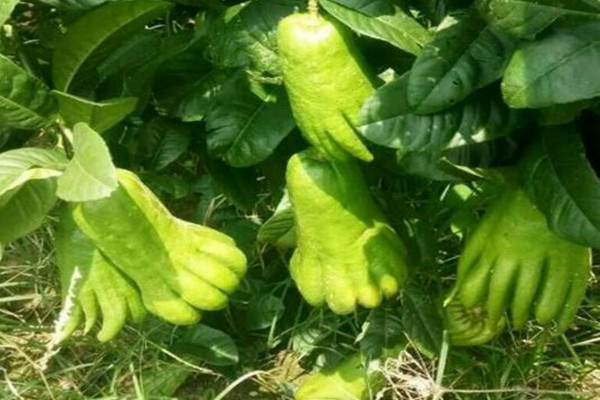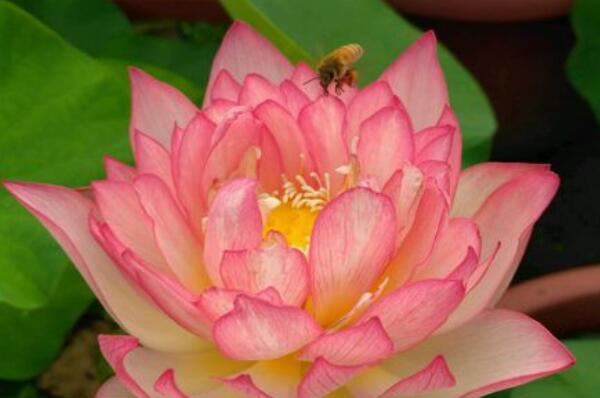How long does lavender seed germinate? How to plant it? What are the effects and effects?
Lavender flowers generally from June to August. It is an important spice economic plant, evergreen plants with aromatic smell, has high ornamental and economic value, many farmers compete to plant. How long do lavender seeds germinate? How to grow? What are the effects and functions?

How long do lavender seeds germinate?
Lavender seed germination rate is low. If the seeds are fresh, they can germinate in 7- 14 days after being treated before sowing. If the seeds are not fresh and untreated, it is difficult to say, maybe a month, maybe longer, maybe not. Before sowing or soaking seeds, rub the seed coat with a towel to remove the oil.
If the seeds are fresh, they can be seeded first, with water of thirty or forty degrees, that is, water that is not hot, soaking for no more than 24 hours. The soil is watered thoroughly at one time, and then the seeds are placed on the surface of the soil, gently pressed with fingers, covered with a layer of lighter medium, about one centimeter, that is, 1- 2 times the seed volume. Then cover a layer of film, tie a few holes to ventilate, put it in a place with sunshine, and keep the soil moist all the time. After germination, remove the film and bask in the sun more.
After soaking seeds, you can also choose to germinate first and then plant. Find a flat container, plate or the like, spread a tissue, cotton pad, or small towel, spray wet with water, then put the soaked seeds on top, cover them with a layer of tissue, spray wet, put them in a plastic bag, make a few holes for ventilation, put them in a warm place with sunshine, open the mouth for ventilation for about an hour every day, observe the seeds at any time, find white, plant the soil immediately, the white part is the root, not the bud, do not plant the opposite. First in the shade, then slowly see the sun.
How is lavender grown?
Lavender can't stand heat and humidity, and if it's long-term, its roots rot and die. When planting outdoors, be careful not to let rain fall directly on the plants. After May, it is necessary to relocate places where direct sunlight cannot be directed, increase ventilation to reduce ambient temperature, and keep cool in order to safely spend the summer. Pay attention to sunlight, moisture, temperature, patience.
1. Soil: Suitable for slightly alkaline or neutral sandy soil. Special attention must be paid to the selection of good drainage medium, can use 1/3 of pearl stone, 1/3 of vermiculite, 1/3 of peat moss mixed use. If open field cultivation should pay attention to soil drainage, can be high mound into a ridge after planting.
2. Watering: Lavender doesn't like water retention in its roots. After watering once, water should be given when the soil is dry, and the surface culture medium is dry, the internal moisture is low, and the leaves are slightly wilted. Watering in the morning, avoid sunlight, water do not splash on leaves and flowers, otherwise perishable and breeding pests. Persistent humid environment will make the roots do not have enough air to breathe and grow poorly, and even suddenly the whole plant dies. The reason for the failure of cultivating lavender is often here.
3. Light: lavender is a full-day plant, need adequate sunlight and suitable humidity environment, can give full sunlight environment is better, half-day can also grow, only flowering is rare. In summer, at least 50% of sunlight should be blocked, and ventilation should be increased to reduce ambient temperature, so that although growth is weak, it will not die. Lavender can grow well on flat ground in winter and should be cultivated under full sunlight.
4. Temperature: Lavender is semi-heat resistant, cool, warm in winter and cool in summer, suitable temperature for growth: 15~25℃, can grow at 5~30℃. Limit temperature: above 35℃, long-term higher than 38~40℃ top stem and leaf withered. Dormancy begins when the temperature is below 0℃ for a long time in winter in North China, and the seedlings can tolerate low temperature of-20~-25℃ when they are dormant.
5. Fertilization: Fertilization can be put into the pot soil as a base fertilizer (once every three months), seedlings can be applied Huabao No. 2 (20--20--20), after the plant is grown, apply fertilizer with higher phosphorus fertilizer Huabao No. 3 (20-30-20). Apply light fertilizer.
6. Pruning: lavender flowers are the most abundant in essential oil content, mainly flowers or inflorescences when used. For convenient harvest, some small inflorescences at the early stage of cultivation may be flattened with large scissors, and the newly grown inflorescences are highly consistent, which is conducive to a harvest. Some varieties can reach heights of up to 90 cm. This method is also used to lower plants to promote more branching, flowering and increased harvest. After flowering must be pruned, the plant can be pruned to 2/3 of the original, plant type will be more solid, and conducive to growth. Pruning should be done in cold seasons such as spring and autumn, usually in spring, and pruning in autumn will affect cold tolerance. When pruning, be careful not to cut lignified parts, lest the plant weaken and die.
7. Common diseases:
When the annual seedlings or cuttings were damaged, wilting, water loss, dark leaf color appeared first, and the top of leaf branches bent downward, which was most obvious in bud stage. Light ones can recover at night, heavy ones die in two or three days, roots rot, stems turn brown and shine. The wilting symptoms of seedlings over three years old appeared in the center or edge of the plant, gradually developed inward and outward, the branches wilted and died, and finally the whole plant died. The damage degree varied with plant age and variety. It usually starts in May and reaches its peak in July and August. French lavender is seriously affected, and the 2-417 variety of the former Soviet Union is lightly affected.
What are the effects and functions of lavender?
1. Lavender has a wide variety of species, its leaves are beautiful, noble and elegant, blue-purple inflorescences are long and beautiful, the plant shape is low and compact, the branches and leaves are dense, the growth force is strong, and the pruning resistance is strong; it can be used in garden squares, patterned flower beds, private gardens, or in garden greenbelts such as flower borders, flower belts, flowers, etc., all of which have unique ornamental effects.
2. Lavender not only has a special ornamental value, but also has a smelling function and a good ecological function. When the plant is touched, it will emit a strong aroma.
3. Lavender, as the first incense plant in the world, its essential oil has been in short supply in the market. Lavender is widely used in beauty care and daily cosmetics because of its special fragrance. It has developed a series of products such as perfume, skin care products, shampoo, incense bath, etc., and is now widely used in psychotherapy and aromatic Spa.
4. Lavender whole grass can be used as medicine, it is also the traditional medicine of ** Uighur doctors, generally used to treat chest pain, cold cough, dizziness headache, palpitations, shortness of breath, joint rheumatism and so on. Lavender essential oil is widely used in medical field, such as sedation, blood pressure reduction, lipid lowering, brain clearing, antibacterial, healing and anti-inflammatory effects.
5. Lavender has significant antibacterial, antioxidant and other biological activities, it not only in the field of medicine has achieved good antibacterial effect, now in food, agricultural antibacterial activity has also been more and more researchers attention. Linalool, the main component of lavender essential oil, can inhibit microbial activity, can be used for fruit and vegetable preservation, has no toxicity and residue to humans and mammals, and has no pollution to food and environment, and will certainly become a new green food preservative; lavender essential oil has obvious repellent effect on mosquitoes because of its fragrant smell.
Time: 2019-04-10 Click:
- Prev

How many catties of chayote per mu? What are the costs and benefits of planting?
Chayote is also called harvest melon, cucumber, melon, fruit, tender stems and leaves, tendrils, underground roots can be made dishes, is a veritable pollution-free vegetables. It is loved by many people and many farmers compete to plant it. So, how many catties of chayote per mu? What are the costs and benefits of planting? How many pounds per mu of chayote
- Next

What's the difference between bowl lilies and water lilies? When is the right time to plant it? How much is the seed price per jin? (attached hydroponics method)
The bowl lotus, which often refers to the small and medium-sized type of lotus, has the same scientific name as the lotus. Also known as potted lotus, pot lotus, table lotus, belongs to the family Nymphaeaceae. So what's the difference between it and water lilies? When is the right time to plant it? How much is the seed price per jin? It is learned from the flower and tree base in Suqian, Jiangsu that generally bowl lotus seeds are sold by grain.
Related
- Fuxing push coffee new agricultural production and marketing class: lack of small-scale processing plants
- Jujube rice field leisure farm deep ploughing Yilan for five years to create a space for organic food and play
- Nongyu Farm-A trial of organic papaya for brave women with advanced technology
- Four points for attention in the prevention and control of diseases and insect pests of edible fungi
- How to add nutrient solution to Edible Fungi
- Is there any good way to control edible fungus mites?
- Open Inoculation Technology of Edible Fungi
- Is there any clever way to use fertilizer for edible fungus in winter?
- What agents are used to kill the pathogens of edible fungi in the mushroom shed?
- Rapid drying of Edible Fungi

